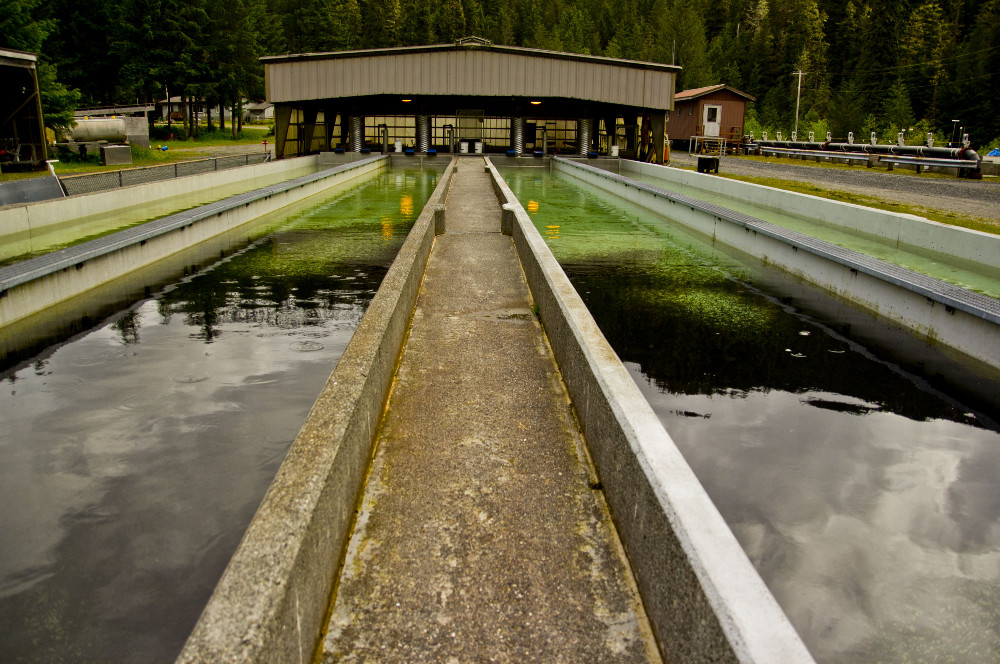
A bill that would have reinstated a surcharge on sportfish licenses in Alaska failed to pass the state Senate during the Legislature’s second session this year.
The measure was proposed by the Dunleavy administration and had broad support from both sport and commercial fishing interests. It was meant to pay for maintaining state-owned salmon hatcheries in Anchorage and Fairbanks along with king salmon production at hatcheries near Petersburg and Juneau. The surcharge began in 2006 and ended in 2020 after the state paid off debt from constructing those Anchorage and Fairbanks facilities.
The bill to reinstate the surcharge passed the House but did not make it beyond the Senate finance committee. Sitka Republican Senator and finance committee co-chair Bert Stedman said Southeast hatcheries were shortchanged under the old fee and he didn’t see that improve with this legislation.
“They basically gave us the short end of the stick because we didn’t have the votes,” Stedman said during an interview at KCAW in Sitka this month. “I tried to fix it at the time and just got run over. It was in my earlier tenure. So I waited and waited and waited until the bonds were paid off and the bonds were paid off and that $5 was supposed to go away. And the (Alaska Department of) Fish and Game wanted that $5 for operations and you know had that bill for $5 and they were going to give the same amount of money to DIPAC and Crystal Lake and I told them No thank you.”
Some of the money from the old surcharge went to produce king salmon at Douglas Island Pink and Chum, or DIPAC in Juneau, along with the Crystal Lake Hatchery on southern Mitkof Island. Stedman is also opposed to the state’s use of money from federal sportfish excise taxes to pay for hatchery operations. He called it a fairness issue.
“They were using federal money to run the hatcheries so it didn’t show up as general funds and they wanted people in Southeast to pay, pushing 30 percent of the cost and get 30 percent of all the licenses that are sold, take that revenue and give us back five or six percent of it. It just wasn’t fair,” he explained.
While the long-term funding bill died this session, the legislature did include an appropriation of $846,100 for Southeast hatcheries in the operating budget. It’s one year of funding and it’s more than the facilities received under the surcharge payment.
Crystal Lake Hatchery near Petersburg is one of the facilities that will see some of that money. That’s owned by the state and operated by the Ketchikan-based Southern Southeast Regional Aquaculture Association, or SSRAA. It produces around half of the hatchery kings caught in Southeast each year. Near the end of the session in May SSRAA general manager Susan Doherty was not holding out hope that the surcharge bill would pass. During an interview at that time, she was grateful for the payment in the operating budget but wanted a permanent funding solution.
“That surcharge, a high percentage was non-residents, it was addition to the non-resident sportfish license fees and it was for most of its years in excess of six million dollars of revenue that we have foregone because we can’t agree how to split the money I guess,” Doherty said.
Alaska Department of Fish and Game commissioner Doug Vincent-Lang writes by email that without the surcharge the state will need to make tough choices on whether to maintain hatcheries using existing funding. He said that could mean reducing other sportfish programs or hatchery production across the state. The department is discussing whether to resubmit the legislation next year but hasn’t made a decision.
The old surcharge was $9 for residents and between $9-45 for non resident licenses. In its final years it brought in an average of $6,686,966 a year with $5,513,916 from non-resident licenses. $500,000 of that a year went to king salmon production at Crystal Lake and DIPAC. The new surcharge as proposed would have meant around $5,598,085 a year in revenue with the bulk of that ($4,750,882) from non-resident licenses.
Rob Woolsey at KCAW in Sitka contributed to this report.










